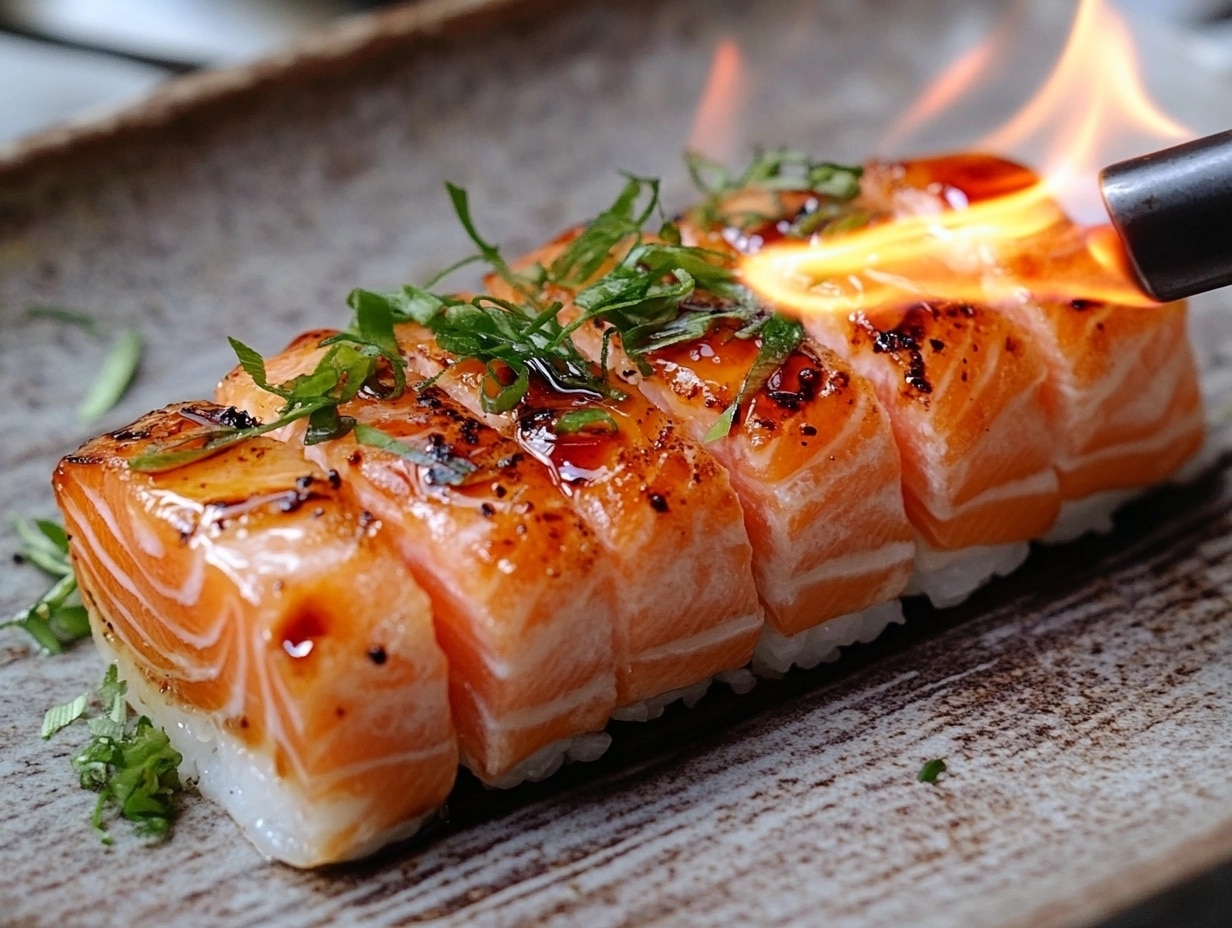When you first hear the word “Aburi,” what comes to mind? A culinary marvel? An artistic tradition? Well, you’re not entirely wrong! This fascinating term has layers of meaning that transcend boundaries, blending cultural heritage with modern flair.
Table of contents
Understanding the Meaning of Aburi
The Origin of the Term “Aburi”
Aburi is a Japanese word that means “flame-seared” or “partially grilled.” Traditionally, this method involves applying an open flame to lightly char the surface of food while leaving the interior raw or barely cooked. But guess what? It’s not just about fire and food—Aburi is a sensory experience.
The technique itself emerged in Japan centuries ago, evolving through time as an innovative way to elevate the taste of fresh ingredients. Fun fact: sushi chefs embraced Aburi as a way to bring out deeper flavors in their fish without overpowering their delicate texture.
Cultural Significance of Aburi
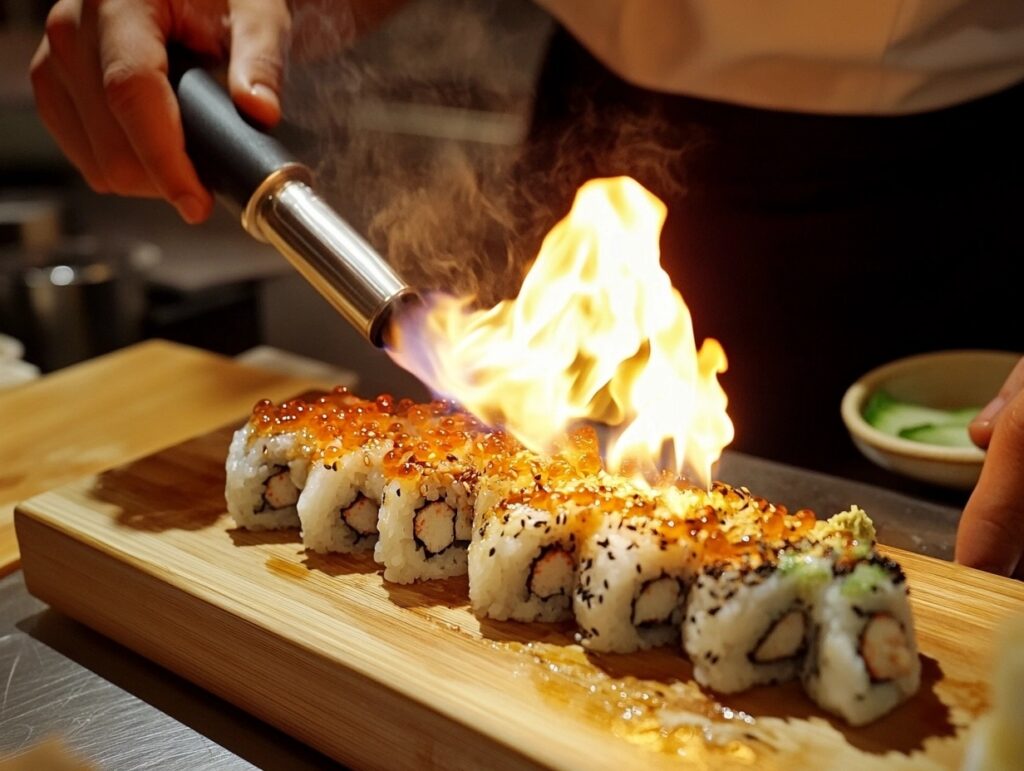
Aburi isn’t just about creating a smoky, caramelized surface; it carries a sense of reverence for ingredients and craftsmanship. In Japanese culture, Aburi symbolizes harmony—the balance of raw and cooked elements, and traditional and modern techniques.
It’s fascinating, isn’t it? Imagine a technique that connects the past and the present in every bite.
Culinary Context of Aburi
What Makes Aburi Unique?
Picture this: the intense heat of a torch sears the surface of fresh salmon, caramelizing its natural sugars. Sushi topped with salmon is a prime example of how Aburi highlights the delicate balance of flavors inherent in Japanese cuisine.
What sets Aburi apart from other cooking methods is its ability to enhance textures and flavors without fully cooking the food. The slight char adds complexity, while the raw interior retains the natural freshness of the ingredient.
Common Techniques Used in Aburi
Think it’s as simple as waving a flame over your food? Not quite! Chefs use techniques like:
- Direct Torch Searing: The most common method, is using a handheld torch.
- Charcoal Grilling: Imparts a subtle smokiness with an authentic Japanese touch.
- Hot Stone Searing: A traditional approach where food is briefly placed on a heated stone.
Each method gives the food a unique texture and flavor profile.
Popular Dishes Featuring Aburi
Aburi is a star player in sushi, but it’s also found its way into other dishes. Some favorites include:
- Aburi Salmon Sushi: Topped with a creamy sauce, often torched to perfection.
- Aburi Wagyu Beef: Thinly sliced, lightly seared, and bursting with flavor.
- Aburi Scallops: Tender scallops enhanced by a touch of smokiness.
Exploring Aburi Beyond the Plate
The Role of Aburi in Art
Beyond its culinary appeal, Aburi has inspired artistic expression. The careful application of heat parallels the precision and patience seen in Japanese calligraphy or ikebana (flower arranging).
Aburi in Traditional Ceremonies
In ancient Japan, flame-searing was sometimes part of ceremonial practices, symbolizing purification and transformation. This cultural depth adds even more intrigue to the simple yet sophisticated technique.
How Aburi is Made
Making Aburi might seem intimidating, but it’s surprisingly accessible with the right tools and a bit of practice.
Essential Tools and Equipment
Here’s a quick list of what you’ll need to get started:
| Tool | Purpose |
|---|---|
| Handheld Culinary Torch | Direct heat application for searing. |
| Heat-Resistant Plate | A safe surface to place your food. |
| High-Quality Ingredients | Fresh fish, meat, or vegetables. |
| Soy Sauce and Seasoning | Enhances the seared flavor. |
Step-by-Step Preparation
Ready to try Aburi at home? Follow these steps:
- Select Fresh Ingredients: The quality of the fish or meat is crucial.
- Season Lightly: A sprinkle of salt or a brush of soy sauce goes a long way.
- Apply Direct Heat: Use a culinary torch to lightly char the surface.
- Rest and Serve: Let the food rest for a few seconds to allow flavors to meld.
Pro tip: Use a steady hand and keep the torch moving to avoid overcooking.
Block Quote
“Aburi is more than a cooking technique; it’s a dance between fire and flavor, tradition and innovation.”
Benefits of the Aburi Cooking Style
Enhancing Flavors Through Aburi
The flame-searing process unlocks hidden layers of flavor by caramelizing natural sugars and fats. Whether you’re torching salmon or beef, the resulting taste is unforgettable.
Preserving Nutritional Value
Unlike deep-frying or grilling, Aburi maintains the nutritional integrity of ingredients. Vitamins, minerals, and omega-3 fatty acids remain intact, making it a healthier cooking option.
Nutrition Facts
| Nutrient | Value (Per Serving) |
|---|---|
| Calories | ~150-200 kcal |
| Protein | ~15-20g |
| Omega-3 Fats | ~2-3g |
| Vitamins | High in B and D |
Challenges and Misconceptions
Overcoming Common Aburi Problems
So, you’ve tried your hand at Aburi, and it didn’t quite turn out the way you imagined? Don’t worry; even seasoned chefs encounter challenges. One of the most common issues is over-searing. The trick lies in keeping the flame moving—linger too long, and you might end up cooking the food entirely, which defeats the purpose of Aburi.
Another hiccup is uneven cooking. This usually happens when the torch isn’t held at the right angle or distance. Aim for a consistent 2-3 inches from the food, and practice makes perfect.
Debunking Myths About Aburi
Have you heard people say Aburi is only for sushi? That’s far from the truth! While it’s a popular technique for sushi, its versatility extends to meats, vegetables, and even desserts. Yes, desserts! Think about flame-seared fruits like pineapple or crème brûlée for an unexpected twist.
Another misconception is that Aburi is only for experts. The reality? It’s beginner-friendly as long as you pay attention to detail.
Aburi in Modern Cuisine
Fusion Recipes with Aburi
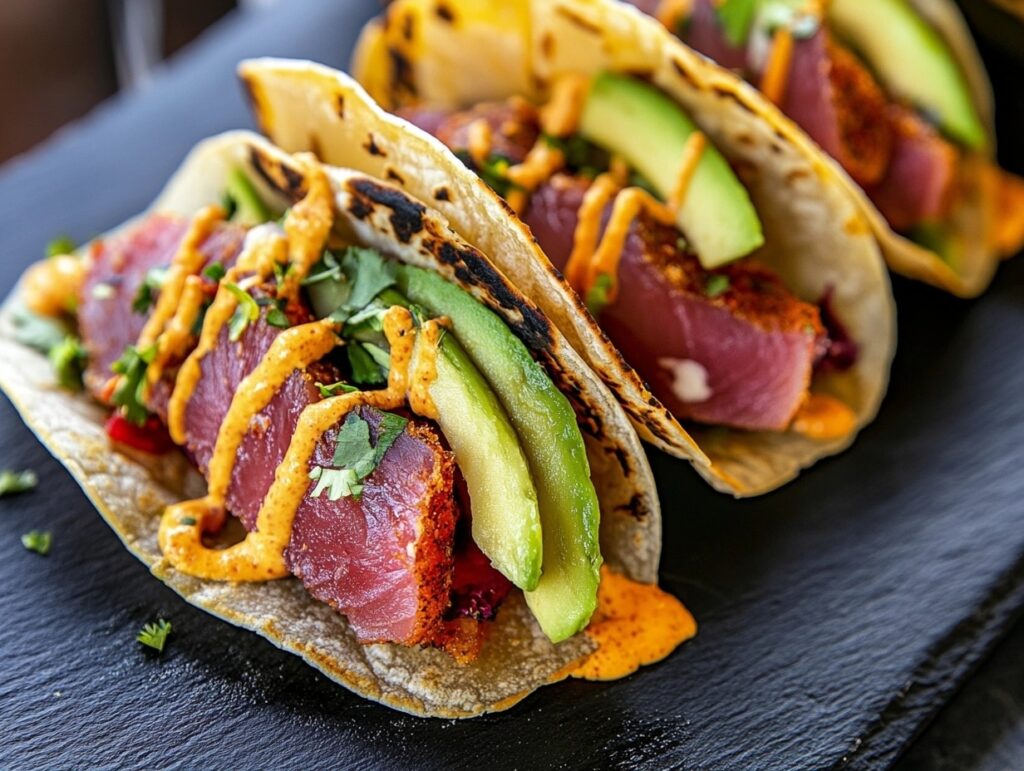
Modern chefs have embraced Aburi as a playground for creativity. For instance, tacos with flame-seared tuna or even pizza topped with Aburi salmon add a global flair to this Japanese technique.
You could also try Aburi avocado toast for a unique breakfast option. Lightly torching avocado slices adds a smoky richness that pairs beautifully with a drizzle of miso dressing.
Innovations in Aburi Techniques
The culinary world never stops innovating, and Flame-seared dishes are no exception. Advanced tools like infrared torches and temperature-controlled grilling surfaces are taking the technique to new heights. These innovations ensure precision, allowing chefs to experiment with textures and flavors like never before.
Block Quote
“Aburi is proof that a single flame can spark limitless culinary possibilities.”
Where to Experience Authentic Aburi
Famous Restaurants and Chefs
If you’re eager to taste Aburi at its finest, head to Japan, where Michelin-starred restaurants like Sushi Saito offer extraordinary renditions. Outside Japan, restaurants like Miku in Vancouver and Zuma in London have gained fame for their Aburi dishes.
Want a pro tip? Look for chefs who specialize in Edomae sushi, as they often incorporate Aburi into their menus with a traditional yet innovative approach.
Festivals and Events Celebrating Aburi
Did you know there are food festivals dedicated to Aburi? Events like the Kyoto Sushi Festival often feature live demonstrations where you can watch master chefs torch sushi with precision. It’s not just food—it’s a performance!
DIY Aburi at Home
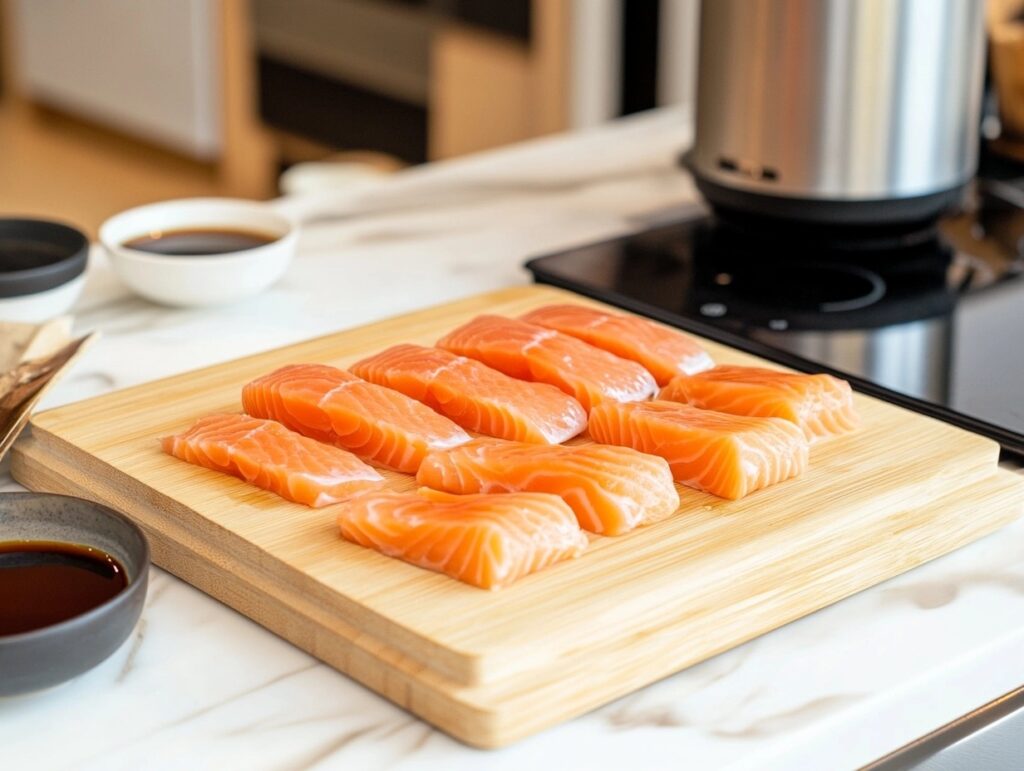
Tips for Beginners
Ready to bring the magic of Flame-seared dishes to your kitchen? Start small. Salmon and scallops are forgiving ingredients that work well for first-timers. Make sure to invest in a high-quality culinary torch and always torch on a heat-resistant surface.
Here’s a fun tip: Keep a bowl of ice water nearby. If you accidentally over-torch a spot, a quick dab of cold water can save the day.
Mistakes to Avoid
Even with the best intentions, mistakes can happen. Avoid these common pitfalls:
- Using the Wrong Ingredients: Freshness is key, especially for seafood.
- Skipping the Seasoning: A little soy sauce or lemon juice can elevate the flavor dramatically.
- Rushing the Process: Aburi is an art—don’t let haste ruin it.
The Future of Aburi
Trends in Culinary Applications
As Aburi continues to evolve, chefs worldwide are experimenting with new ingredients and sustainable practices. Imagine plant-based flame-seared dishes featuring flame-seared tofu or eggplant. This aligns with global shifts toward ethical and sustainable dining, as seen in the creative use of salmon highlighted in What is the Healthiest Thing to Eat with Salmon?.
Sustainability and Aburi Practices
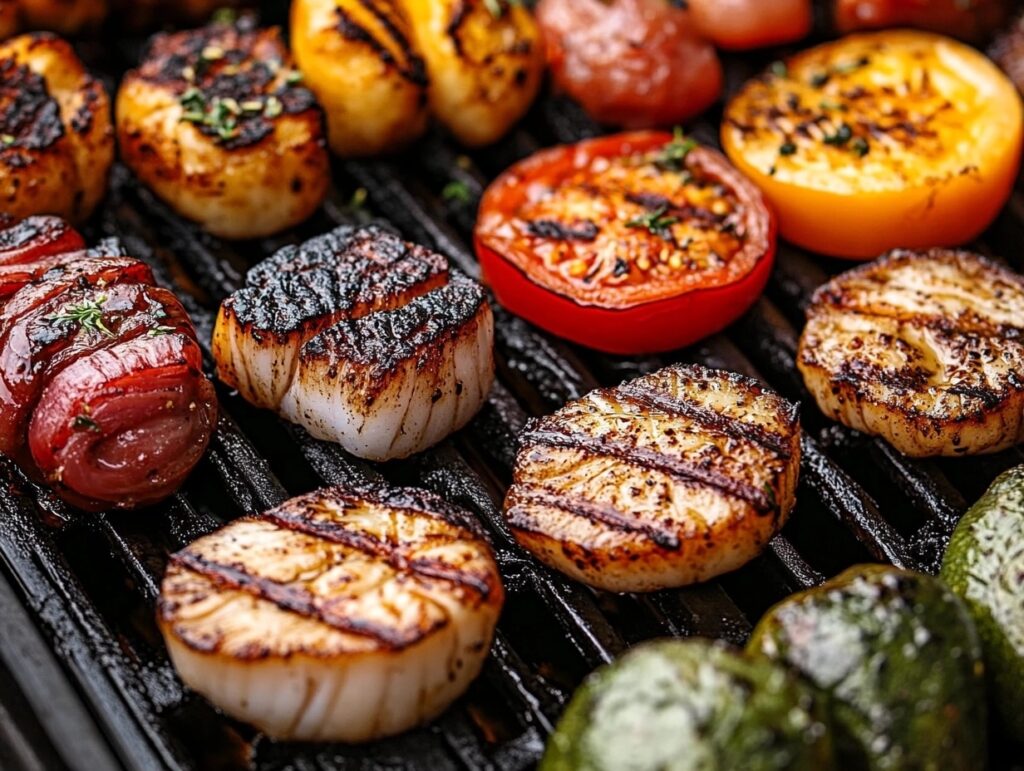
Speaking of sustainability, Flame-seared dishes complement the nose-to-tail cooking philosophy by making use of cuts of fish or meat that might otherwise be discarded. Minimal cooking also reduces energy use compared to other techniques.
FAQs About Aburi
What equipment is essential for Aburi?
A culinary torch is a must-have. You’ll also need heat-resistant surfaces and fresh ingredients to ensure the best results.
Is Aburi suitable for all types of food?
Not all foods work with Flame-seared dishes, but many do! Seafood, thin cuts of meat, and even certain vegetables and fruits are ideal candidates.
What are the health benefits of Aburi?
It’s a healthier alternative to deep-frying or heavy grilling, preserving nutrients while adding complex flavors.
Can beginners try Aburi cooking?
Absolutely! Start with simple ingredients like salmon or scallops, and practice to get the hang of it.
DIY Aburi at Home
Aburi Recipes to Try at Home
Making Flame-seared dishes at home doesn’t require fancy restaurant-level skills. Let’s dive into a simple yet delicious recipe you can recreate in your kitchen.
Aburi Salmon Sushi Recipe
Ingredients and Quantities
| Ingredient | Quantity |
|---|---|
| Fresh Salmon | 200g (thinly sliced) |
| Cooked Sushi Rice | 1 cup |
| Soy Sauce | 2 tbsp |
| Mirin (optional) | 1 tbsp |
| Japanese Mayo | 2 tbsp |
| Torchable Sauce (like Unagi) | 1 tbsp |
| Lemon Juice | 1 tsp |
Step-by-Step Instructions
- Prepare the Rice
Season your sushi rice with a blend of rice vinegar, sugar, and salt. Shape small, oblong mounds for the base. - Slice the Salmon
Slice fresh salmon into thin pieces that can easily drape over the rice mounds. - Assemble the Sushi
Place a salmon slice over each rice mound. Lightly brush with soy sauce and mirin for extra flavor. - Torch It
Use your culinary torch to lightly sear the salmon. The edges should caramelize without cooking through the center. - Top and Serve
Add a dollop of Japanese mayo or unagi sauce for a creamy finish. Garnish with lemon juice or fresh herbs if desired.
Mistakes to Avoid While Torching
Mistakes happen, but they’re learning opportunities!
- Overcrowding the Plate: Torch one piece at a time to avoid uneven searing.
- Holding the Flame Too Close: This can burn the surface without the caramelization you’re aiming for.
- Neglecting Safety: Always torch in a well-ventilated area, away from flammable items.
The Future of Aburi
Aburi and Global Influence
The world is catching on to the brilliance of The Aburi technique. Fusion cuisines now feature dishes like Aburi tacos, where flame-seared meats meet Mexican spices, or Aburi pasta, a delightful mix of Italian and Japanese flavors. This blend of cultures showcases the versatility of the technique.
Chefs worldwide are also integrating technology with tradition. Sous-vide cooked ingredients are now torched to mimic Aburi’s texture while retaining a unique tenderness.
Sustainability and Ethical Practices
As culinary practices evolve, sustainability remains a priority. Flame-seared dishes techniques are being adapted to minimize food waste and energy consumption. For instance, some chefs utilize scraps of fish or vegetables that are still flavorful but not visually perfect.
Restaurants are also promoting sustainable sourcing by prioritizing locally caught seafood for their Aburi technique dishes.
Conclusion: Embracing the Art of Aburi
Aburi is more than a cooking method; it’s a bridge between simplicity and sophistication. Its origins in Japanese culture reflect a reverence for ingredients, while its modern applications demonstrate creativity and innovation.
Whether you’re savoring the Flame-seared dishes technique at a world-class sushi bar or trying it for the first time at home, this technique promises an unforgettable culinary experience. So, grab your torch, let your creativity flow, and give Aburi a try—you might just discover your new favorite cooking style!

